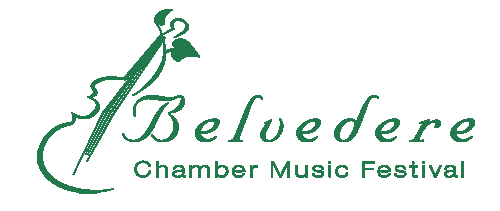
History - Performers - Videos - Composition Contest
Concert 1 - June 17, 2020, 7:00 p.m.
|
Program Notes Festival Booklet (pdf) |
| J.S. Bach Violin Sonata No. 2 in A minor, Grave and Fugue Bach’s set of six unaccompanied sonatas and partitas for the violin represent the unchallenged peak in solo violin music, both in technique and in expressive variety. All these works require extraordinary skill in double-, triple-, and quadruple-stopping, as if the violin were an instrument with the same potential for chords and harmony as a harpsichord or an organ. The Second Sonata, in A minor, opens with an improvisatory Grave which leads directly into the fugue, a movement which allows flowing episodes between the strictly fugal passages, where Bach’s invention is at its incredible best. |
|
| Béla Bartók: Romanian Folk Dances Perry Mears, piano The Romanian Folk Dances, published in 1915 has proved one of his most popular pieces. The dance tunes used in the six movements were collected by Bartók between 1910 and 1912 and are: a stick dance for young men; a sash dance for couples in which the women hold the men’s belts; a stamping dance performed on the spot, the women placing their hands on the men’s shoulders while the latter stand akimbo; a horn dance; a polka; and a fast dance for couples. |
|
| Francis Poulenc: Violin Sonata, FP119, II. Intermezzo Daniel Gilbert, violin; Brian Ray, piano Poulenc’s Violin Sonata FP 119 was composed in 1942–1943 in memory of the Spanish poet Federico García Lorca. He tried several times to write a sonata for a string instrument. As early as 1918, he made sketches for a violin sonata, which he later destroyed. He made several further attempts between 1925 and 1935. The published violin sonata was at least the fourth approach, and the only one to have been preserved. The sonata adopts a fast-slow-fast three-movement plan. The central passage of the Intermezzo in thirds, by the violin, is the summit of the work. |
|
| Reynaldo Hahn: Le Rossignol eperdu - Le fete de Terpsichore Adam Bowles, piano Reynaldo Hahn (1874-1947) was born in Venezuela but his family moved to Paris when he was three. He was a child prodigy who entered the Paris Conservatory at age ten and later became a champion of French art song. He also wrote a set of 53 “poems for piano” published in a set titled Le Rossignol Éperdu (The Distraught Nightingale). The pieces range from 30 seconds to eight minutes and draw inspiration from literary and artistic images. |
|
| Jacques Ibert: Five Pieces for Oboe, Clarinet, and Bassoon Michelle Vigneau, oboe; Nobuko Igarashi, clarinet; Susanna Whitney, bassoon Jacques Ibert was born in Paris. He enjoyed a long career eventually becoming one of the best known French composers of the 20th century. Five Pieces for Oboe, Clarinet, and Bassoon was composed in 1935. There are two andantes sandwiched between three allegros. It is a slight work with the shortest movement lasting less than a minute and the longest under three. The sprightly march-like opening Allegro vivo is especially attractive. The Andantino which follows is a reflective introduction for the Allegro assai, a modern minuet with a charming cuckoo passage. A second Andante leads to the finale, Allegro quasi marziale which really is not all that martial but is nevertheless effective in bringing this bright charming work, written mostly in a neo-classical style, to a successful close."--The Chamber Music Journal |
|
Dan Lazarescou: Songs from the Mystic Realm (2018) |